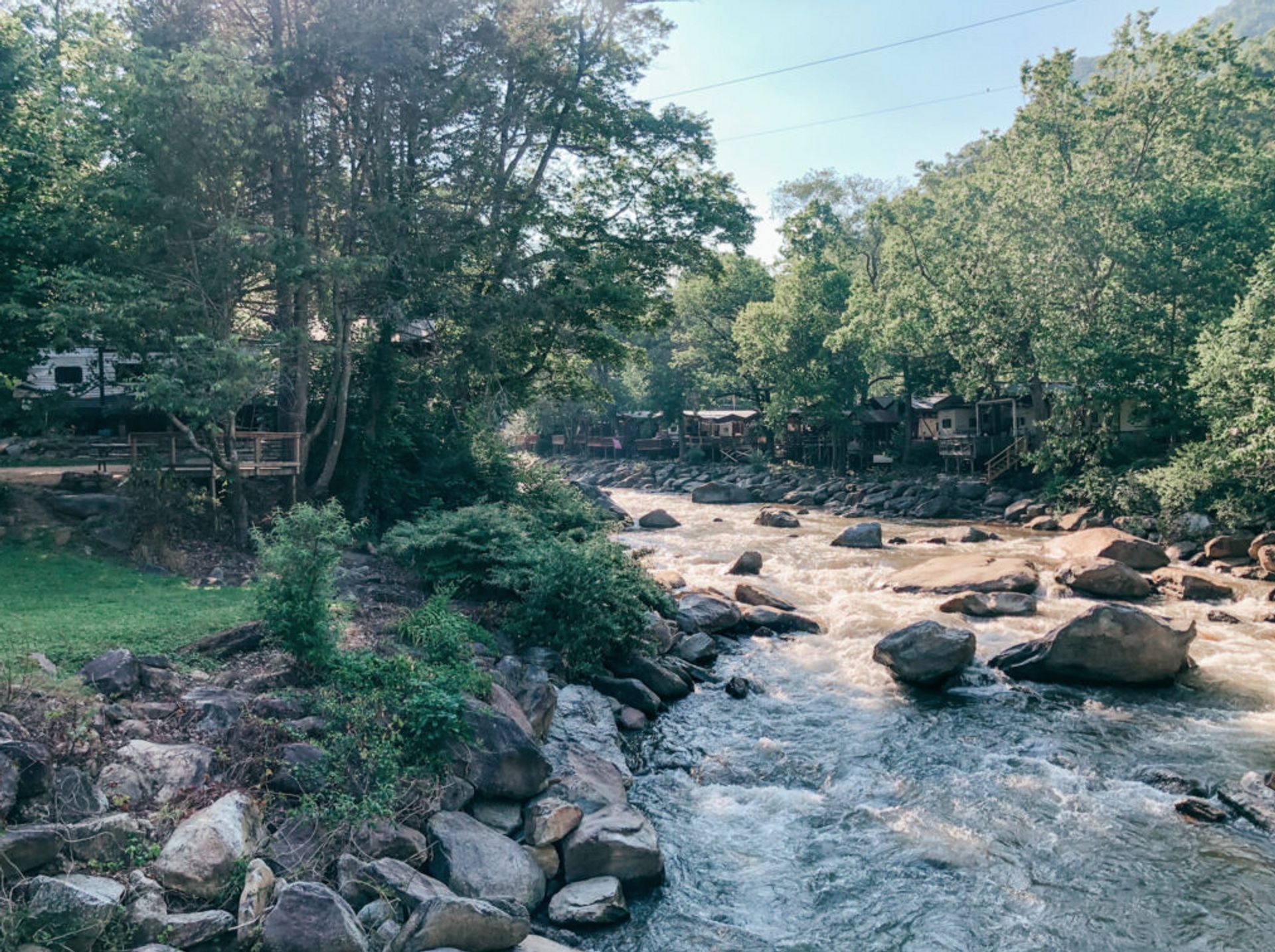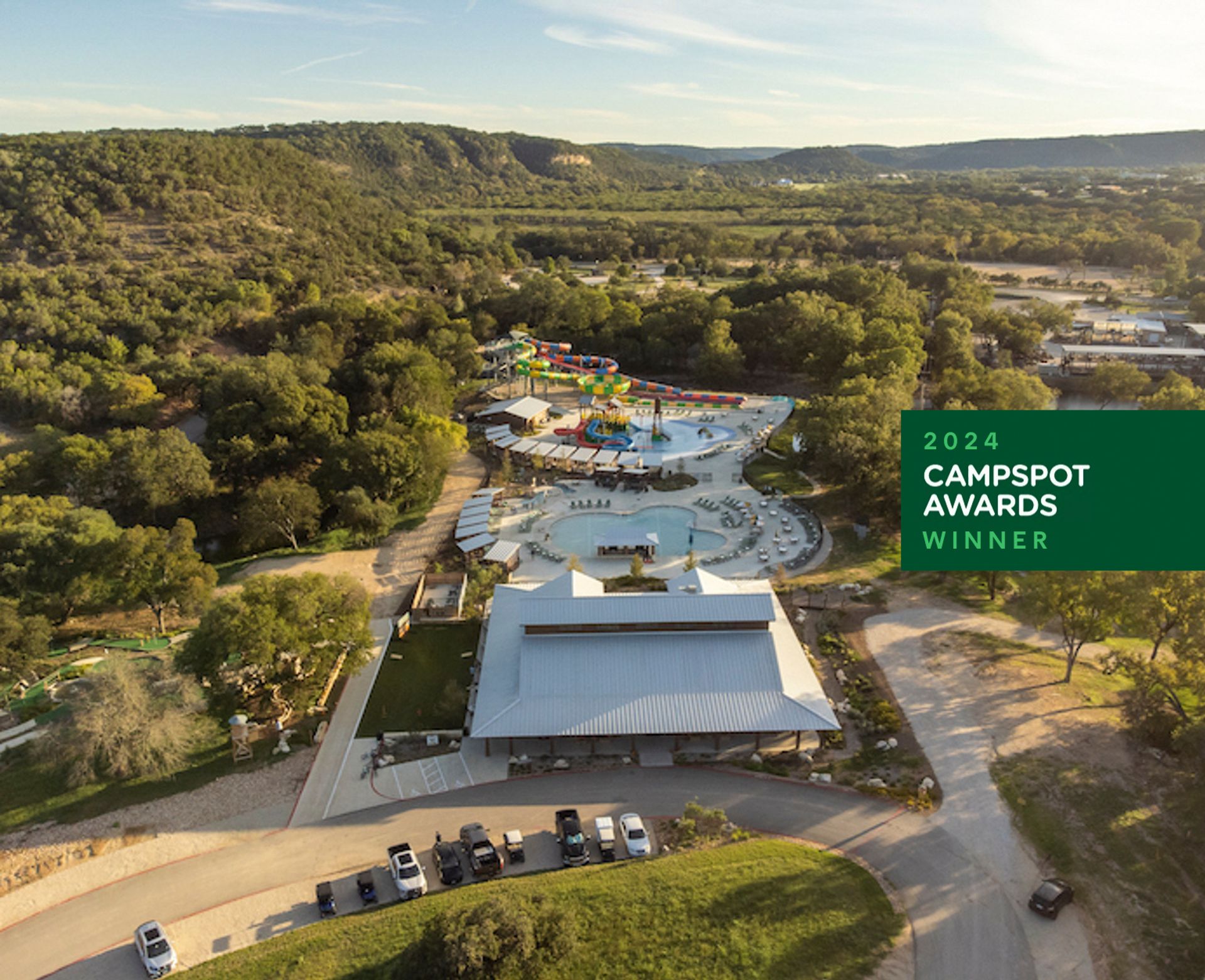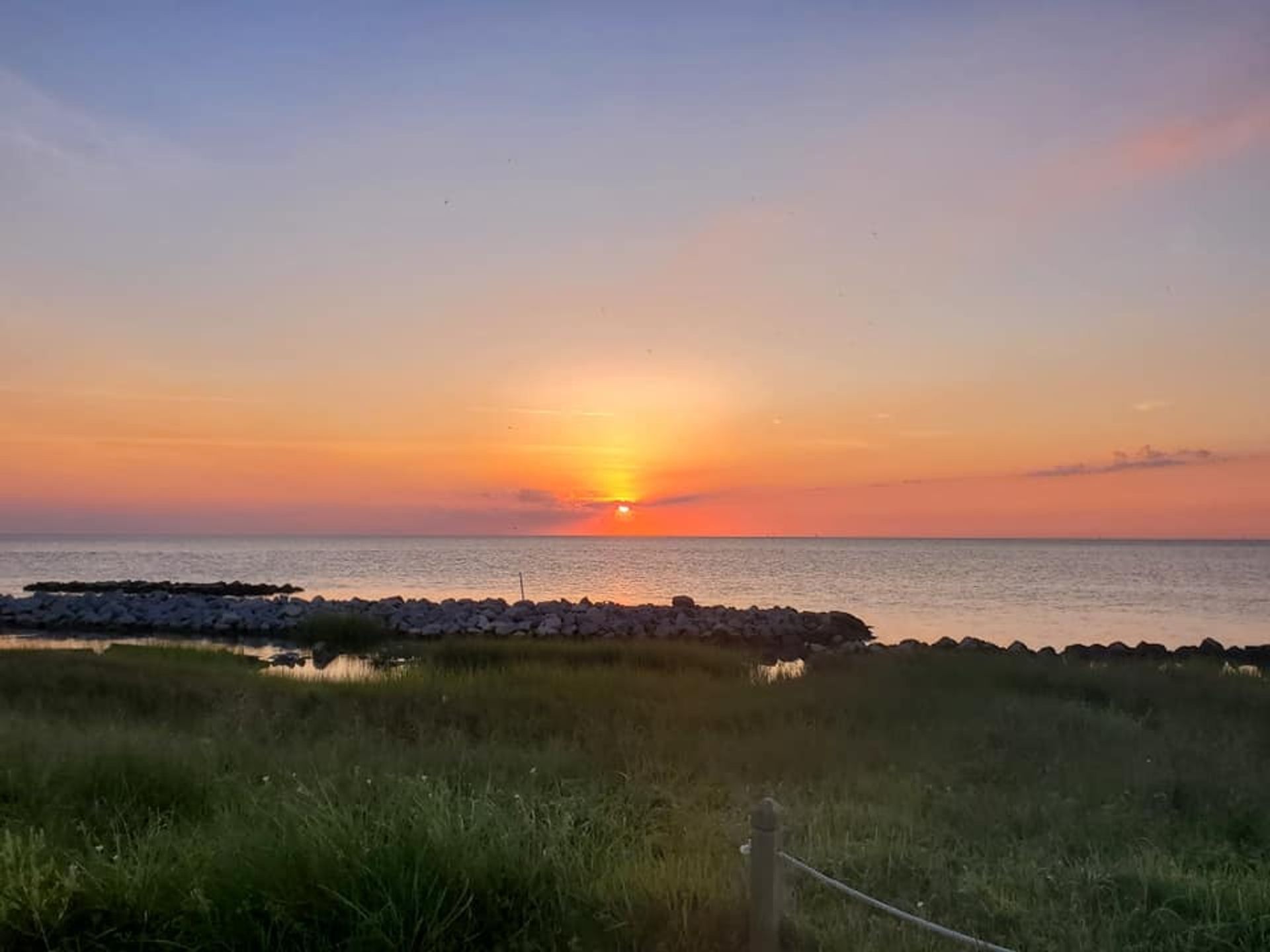The Camper’s Guide to Dark Sky Camping and Astrotourism
- Aimee Long

Have you ever found yourself looking skyward on a cloudless night while camping, appreciating how many stars you’re able to see when you’re so far from the city? Chances are you’ve noticed that stargazing is clearer and more intense when you’re away from home. There’s a whole world dedicated to the appreciation and preservation of our night sky, and dark sky camping is one of the best ways to participate in it!
Whether you’re planning to sleep beneath an indigo quilt of constellations in the Outer Banks or catch a glimpse of the Aurora Borealis in Wrangell-St. Elias National Park, we’ve got you covered. Here is your ultimate guide to dark skies and astrotourism camping!
What Is Astrotourism?

What exactly is astrotourism? Astrotourism is defined by Utah University, in the densest area of dark sky places in the U.S., as being “nature-based tourism specifically concerned with the viewing of celestial objects, space, and the physical universe.” Essentially, astrotourism is a trip that is centered on viewing the night sky, preferably in an environment with clear, unbridled conditions. What better place to do just that than a designated Dark Sky Park?
Astrotourism is unique and exciting because it often takes intrepid adventurers to remote locations they may not have otherwise sought out. Since the dawn of time, humans have been fascinated with the stars, planets, and the stunning Milky Way, using it to navigate and to predict celestial events. With the turn of the century and industrialization, many lost their connection to dark skies and forgot about their effervescent beauty. Today, there has been a renaissance in the appreciation of dark skies through astrotourism as now more than ever, travelers are looking for ways to stargaze and see our universe with the naked eye.
Where Can I Camp for Celestial Events?

If you’re looking to camp for celestial events, begin your search by looking for Dark Sky Parks or Communities near you by searching through the International Dark-Sky Associations list of designated Dark Sky Places. This list is the perfect place to find inspiration to visit a destination you’ve always wanted to see, like a national park, which often have unprecedented views of the night sky, or to discover somewhere nearby that you hadn’t expected.
The following destinations are also incredible stargazing spots, top-ranked as “clear sky sanctuaries” by Campspot’s data insights team. Check out the accompanying campgrounds for beautiful nighttime views.
1. Asheville, North Carolina
Nestled in the Blue Ridge Mountains, Asheville offers an easy escape from city lights and into stargazer paradise. Just under an hour away is the Mayland Earth to Sky Park, home to the Bare Dark Sky Observatory and the Glenn and Carol Arthur Planetarium. With an active local astronomy club and stunning night views, it’s a dream spot for aspiring and seasoned star chasers alike.
Where to Camp: Hickory Nut Falls Family Campground

Hickory Nut Falls Family Campground
If you're looking for a great way to experience Chimney Rock and Lake Lure, then look no further than Hickory Nut Falls Family Campground in North Carolina. With 70 RV sites, 13 tent sites, and 2 cabins, there is a perfect spot for all. Hickory Nut Falls Family Campground is located off Highway 64-74 across the Broad River. All the campsites are tucked in the beautiful Chimney Rock forest and offe
- Fishing
- Arcade
- Playground
- Bathrooms
- Showers
- Internet Access
- Garbage
- Laundry
- Pavilion
2. Jamestown, Tennessee
Tucked into a darker corner of Tennessee, Jamestown is your gateway to serious stargazing. Just 30 minutes away is Pickett CCC Memorial State Park & Pogue Creek Canyon State Natural Area, a certified Dark Sky Park. According to darksky.org, “activities include an annual New Year’s Eve hike, a Junior Ranger Camp each July, an annual star party and regular dark skies programming during peak visitor season in the summer.”
Where to Camp: True West Campground Stables and Mercantile
3. New Braunfels, Texas
Staying in New Braunfels puts you just a stone’s throw from Wimberley Valley, a pair of small towns (Wimberley and Woodcreek) that proudly earned their International Dark Sky Community status. Not only will you get clear views of the stars, but you can pair your trip with riverside fun, a vibrant arts scene, and German-inspired eats. Stargazing with a side of schnitzel? Yes, please.
Where to Camp: Camp Fimfo Texas Hill Country

Camp Fimfo Texas Hill Country
Step outside of the ordinary and, also, outside in general with a glamping or camping experience at Camp Fimfo. Experience the outdoors in new ways, you're bound to love it! You'll have access to a swim-up bar, outdoor movies, water slides, and so much more. Right along the Guadalupe River, make Camp Fimfo your next getaway destination! 2022 CAMPSPOT AWARDS WINNER: Top for Families, Top Design
Featured
'24
- Waterfront
- Waterpark
- Pool
- Fishing
- Hot Tub / Sauna
- Dog Park
- Cable TV
- Mini-Golf
- Golf Cart Rental
- Arts & Crafts
- Restaurant
- Playground
- Ice Cream
- Basketball
- Jumping Pillow
- Sports Field
- Volleyball
- Bathrooms
- Showers
- Internet Access
- General Store
- Snack Stand
- Garbage
- Laundry
- Pavilion
- Special Events
4. Greenville, Maine
Looking for unspoiled skies in New England? Greenville is your launchpad to AMC Maine Woods, the region’s one and only certified International Dark Sky Park. Perched on the edge of the North Maine Woods, it’s remote, wild, and perfect for campers chasing shooting stars.
Where to Camp: Moose Creek RV Resort
5. Kanab, Utah
Kanab already feels like it’s on another planet with its red rock views, but it’s also your entry point to one of the most unique stargazing spots around. Just up the road is the Kaibab Paiute Reservation, the first-ever Dark Sky Nation on Earth.
Where to Camp: Dark Sky Campground

Dark Sky RV Campground
Dark Sky RV sits on 40 acres of untouched sagebrush. Their 18 full service sites and 10 Camp Luxury sites for vans have unobstructed views of the Red Cliffs, Vermillion Cliffs, and the Kaibab Plateau as well as the most beautiful sunrises, sunsets and a sky full of stars that’s hard to believe. Relax and enjoy their luxurious amenities, including private bath suites, outdoor showers, open terrac
'25
- Dog Park
- Bathrooms
- Showers
- Internet Access
- General Store
- Garbage
- Laundry
- Pavilion
- Special Events
- Zip Line
What Should I Bring With Me for Stargazing?

From amateur telescopes to telephoto lenses, stargazing can be as simple as stepping outside your tent after dark. Here are a few things to bring along if you’re going on a camping trip dedicated to the cosmos!
Warm Clothes
You’ll be surprised how cold it can get in the middle of the night, when most of us are asleep. Bring along warm layers and gloves to keep warm while heading out to try and catch a glimpse at shooting stars.
Photography Equipment
Whether you plan to capture the night sky with your iPhone or are a savvy astrophotographer, bring along gear that will help you document the moment.
Telescope
A telescope might seem like an advanced piece of equipment but they’re much easier to come by than you might think. Bring one along and witness celestial objects you’ve never seen before.
Flashlights or Headlamps
You’ll need to bring flashlights, a headlamp, or some form of light to guide your way. You’re in a Dark Sky Park after all! Many headlamps have a red light feature which is great for uninterrupted constellation views.
Hot Drinks
Bringing along a special drink for your dark sky camping trip will not only keep you warm but will make your efforts feel well rewarded.
Removable Rain Fly Tent
Fall asleep stargazing!
Bug Spray
Unfortunately, being out after dark means you’ll play host to our bloodthirsty friends, the mosquitoes. Come prepared with bug spray to keep the biters at bay.
What Are Some Upcoming Celestial Events That Would Be Cool for Dark Sky Camping?

Mark your calendars for these upcoming celestial events that will ensure an amazing dark sky camping trip and stargazing experience.
🌠 Double Meteor Shower Spectacle
Date: July 30 to 31, 2025
Get ready for a rare celestial double feature on July 30 to 31, when the two meteor showers, Southern δ‑Aquariids and α‑Capricornids, will peak at the same time. The combined show can reach up to 30 meteors/hour.
🌕 Sturgeon Supermoon
Date: August 9, 2025
The Sturgeon Moon will be a supermoon this year, meaning it’ll appear larger and brighter than usual. It’s named after the giant fish once plentiful in North American lakes, but we promise, the moon will steal the show.
🌠 Perseid Meteor Shower
Peak: August 11 to 13, 2025
Arguably the most popular meteor shower of the year, the Perseids can deliver up to 100 meteors per hour under clear, dark skies. With warm nights and a mid-August peak, this is the perfect excuse for a late-night blanket-and-hot-cocoa session.
🌕 Total Lunar Eclipse (Blood Moon)
Date: September 7, 2025
This total lunar eclipse will turn the moon a deep, rusty red as it passes through Earth’s shadow. It’s a dramatic, awe-inspiring event that doesn’t come around often. If you’re camping under dark skies, you’ll have front-row seats to this cosmic performance.
🌑 New Moon
Date: August 25, 2025
Why does the new moon matter? Because with no bright moon in the sky, it’s one of the best nights for stargazing. Plan your escape around this date for peak Milky Way views and maximum meteor spotting.
What Are Dark Skies?

Dark skies are defined by Utah University as being “places where the darkness of the night sky is relatively free of interference from artificial light.” While dark skies are becoming more and more scarce, the United States is a great destination for seeking out designated Dark Sky Places and learning more about what it takes to become a certified Dark Sky Place.
The International Dark-Sky Association’s rigorous certification process shows that dark skies can be rare and difficult to find. A dark sky is one that is almost completely free of light pollution and a place where you can see the night sky in the traditional sense, a smog-less field of constellations. America’s natural wilderness is fantastic for discovering our deep and spiritual connection to the night.
Why Are Dark Skies Important?
Dark Skies are becoming increasingly rare as civilization encroaches ever more into isolated natural areas. Light pollution, while it might seem harmless, affects the natural circadian rhythm of not only plants and wild animals, but humans as well. Light also contributes to our carbon footprint.
The U.S. alone contributes over 15 million tons of CO2 every year, just for outdoor lighting alone. Until very recently in human history, virtually everyone in America could look up and see millions of stars, including the Milky Way! According to a study completed in 2016 by National Geographic, less than 1% of the country can see our galaxy today, making it more important than ever to take protecting our dark skies seriously through limiting light pollution.
Our night sky was once a map and resource that we used for thousands of years until the advent of electricity. Dark skies are important for us to connect with and cherish as a resource that we continue to look to for guidance.
How Can I Go Dark Sky Camping?

The best place to start if you’re looking to camp in an area with dark skies is to look for places where the air will be clear from both pollution and weather related variables and a place that is far from major cities as light smog can be seen from as far as 200 miles away. Summer heat can also obscure the dark skies making winter or shoulder months ideal and a sustainable option as these areas often see less crowds.
While a quick look at a light pollution map will reveal that most of the best places to see dark skies are in the west, there are many places east of the Mississippi that are worth seeking out for celestial wonders. One of the best resources for dark sky parks is the official International Dark-Sky Association’s website which lists each and every designated park, community, sanctuary, reserve, and even urban night sky places.
Apart from the destinations mentioned above, a couple top campgrounds on Campspot to reserve for a stargazing adventure are Jerniman’s Campground along the Outer Banks remote Ocracoke Island, or Trinity View Resort near Idaho’s Sawtooth Mountains. These are just a couple of the hundreds of campgrounds that are near or within a dark-sky designated area.

Jerniman's Campground
Jerniman's is your one-of-a-kind, family-friendly island campground getaway, complete with spacious RV sites and tent spots with full hookups, and picnic tables. If you'd like to get around the property easier, golf carts are available to rent. Make your next getaway a visit to North Carolina, and be sure to book your spot at Jerniman's for an unforgettable and comfortable camping experience!
- Arcade
- Golf Cart Rental
- Restaurant
- Outdoor Theater
- Ice Cream
- Bathrooms
- Showers
- General Store
- Dump Station
- Snack Stand
- Garbage
- Laundry
How to Stargaze, Sustainably
Because many Dark Sky Parks are located in remote and rural communities and national parks, astrotourism has caused a boom these areas may not have otherwise seen. This is beneficial for local economies but can be harmful to their natural surroundings if we don’t do our part to keep them clean and stargaze in an eco-friendly manner. A few tips to stay sustainable while dark sky camping and stargazing include:
Going in the Off Season
Oftentimes the night sky is best viewed in the shoulder season and winter, when the air is crisp. The off season is a sustainable option because many of the communities that see astrotourism are bombarded in the high season but see only a fraction of visitors in less popular months.
Reducing the Light From Your Campsite
Keep your own light pollution down at camp by turning off all lights before going to sleep and utilizing the red light feature on your headlamp or lantern.
Follow Leave No Trace
As with any time you’re spending time in the outdoors, following Leave No Trace Principles is essential for keeping the natural environment healthy and happy!
If you’ve been inspired by astrotourism and want to help contribute to dark skies at home, you can also follow these simple tips from the International Dark-Sky Association to do your part.
- Close your blinds or curtains at night to help keep light from escaping
- Use outdoor lighting sparingly
- If you’re concerned about security, use motion detectors or timers instead of flood lights
- Shield outdoor lights that must be kept on
- Get the kids involved by measuring the light pollution in your area
Whether you just want to get the kids out under the stars to introduce them to astrotourism or are looking to experience one of this year’s incredible celestial events, we hope you feel more informed than ever to venture out in nature and see what dark skies have to offer. From taking a road trip somewhere dark for the upcoming Geminids meteor shower to just pitching a tent in your own backyard, astrotourism has never been so easy. Grab your headlamps, telescopes, and star charts and seek out a place to go dark sky camping near you!
This post was originally published in April 2023, and has since been updated with the latest and greatest information.
Freelance writer and lover of all things travel, Aimee Long has spent the better part of her life chasing her dreams of seeing the world. Whether hiking along a rocky cliff face in coastal California or exploring the beaches of Vietnam, home is wherever her feet are. When she’s not writing her heart out and helping others uncover amazing destinations you’ll find her cuddling her beloved cat, hunting for shells in the Outer Banks, or avidly planning her next trip.
Image credit in order of appearance: Adobe Stock – tolstnev, Adobe Stock – den-belitsky, Adobe Stock – anatoliy_gleb, Adobe Stock – revers_jr, Adobe Stock – Cory, Adobe Stock – Marek, Adobe Stock – adogslifephoto, Adobe Stock – vadimborkin





